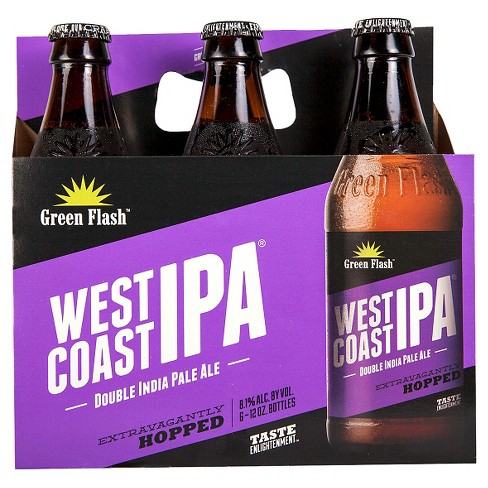West Coast IPA
Hazy IPAs have had a profound impact on the modern craft beer world, dominating the beer scene for last decade. The Alchemist’s 2011 release of Heady Topper, a world-renowned tropical and juicy brew, is generally credited with starting the east coast beer trend. Over the last 10 years, brewers have constantly pushed the boundaries of this hazy style, constantly upping the ante on creating bolder, juicier, hazier beers.
As the haze craze rages on, West Coast IPA, once at the center of the craft beer scene, seems to have all but disappeared, the neglected sibling of the East Coast IPA. So, whatever happened to the unapologetically bitter beers of the early to mid 2010s?
A Decade of Difference
Ten years ago, a west coast brew was almost always crystal clear with piney, resinous, dank flavours that had a pronounced hop bitterness and fairly dry finish. The term West Coast IPA was trademarked by Green Flash in 2011 and served to codify the style of hop-forward brews that were sweeping the pacific coast. It solidified the west coast style through difference from its cloudy east coast brethren. In addition to the eponymous Green Flash West Coast IPA, other beers that helped to define this style of IPA were Stone IPA, Russian Pig IPA and Ballast Point Sculpin.
An Embittered Battle
In the mid-2010s, west coast brewers initiated a friendly competition amongst craft beer circles to determine who could make the most bitter beer possible, often resulting in a battle of one-upmanship and some remarkably unpalatable brews. It’s not surprising that the discourse surrounding this often-absurd west coast battle takes on a military tone, and is repeatedly referred to as an “arms race” to bitterness.
During the same time period, the craft beer industry as a whole was rapidly changing and expanding. Hop farmers were seeing an increased demand for specific hop varietals and began creating novel hybrids with juicier, sweeter and tropical notes than were previously available. Similarly, yeast labs also started experimenting with different strains to produce a wider variety of flavours to satiate the desires of innovative brewers.
As beer writer Jim Vorel suggests, the “evolution of what ‘West Coast IPA’ implied in effect paved the way for the flavors we now associate with hazies,” by providing space for East Coast IPAs to explore juicier, fruitier and more opaque options.
So, What Happened to West Coast IPAs?
Earlier-era West Coast IPAs are still available today, though newer versions have quietly evolved in the background and out of the spotlight of whatever new brew is trending in the craft beer scene. Modern versions of the West Coast IPA tend to show a more restrained bitterness, incorporating newer hop and yeast strains, while maintaining focus on citrus, tropical fruit and resinous qualities.
Today’s West Coast IPAs are still dry, crisp and relatively clear when compared to their east coast counterparts. It’s a natural progression and evolution of a style that is growing alongside a changing beer landscape and the expansion of hop and yeast varietals. It’s easy to wax nostalgic for the biting, bitter IPAs of the past (and there were so many great ones!), but it’s also time to embrace change and re-embrace the west coast style. Who knows? You may even discover your new favourite brew!
(Leah is a Toronto based freelance writer as well as Head Beer Weenie and a server at C’est What)


